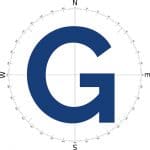Writer, a full-stack generative AI platform for enterprises, announced its Series B funding round of $100 million today. The round is being led by ICONIQ Growth with participation from WndrCo, Balderton Capital and Insight Partners, who led the Series A, and Aspect Ventures, who led the Seed. In addition, this round includes participation from several Writer customers such as Accenture and Vanguard.
The Series B funding will be used to further invest in the company’s own industry-specific large language models (LLMs), and to add agent and multimodal capabilities to its LLMs. Writer is built from the ground-up for the enterprise. It empowers the entire organization including support, operations, product, sales, HR, and marketing.
The platform includes Writer-built LLMs, Knowledge Graph to integrate with business data sources, and an application layer of chat interfaces, prebuilt templates, and composable UI options. Writer models can be self-hosted, which allows customers to get the security benefits of building their own model with the speed to value benefits of an end-to-end solution. Writer takes a full-stack approach that enables diverse use cases across the entire organization, not just solely on foundation models or an out-of-the-box app that only generates content.

